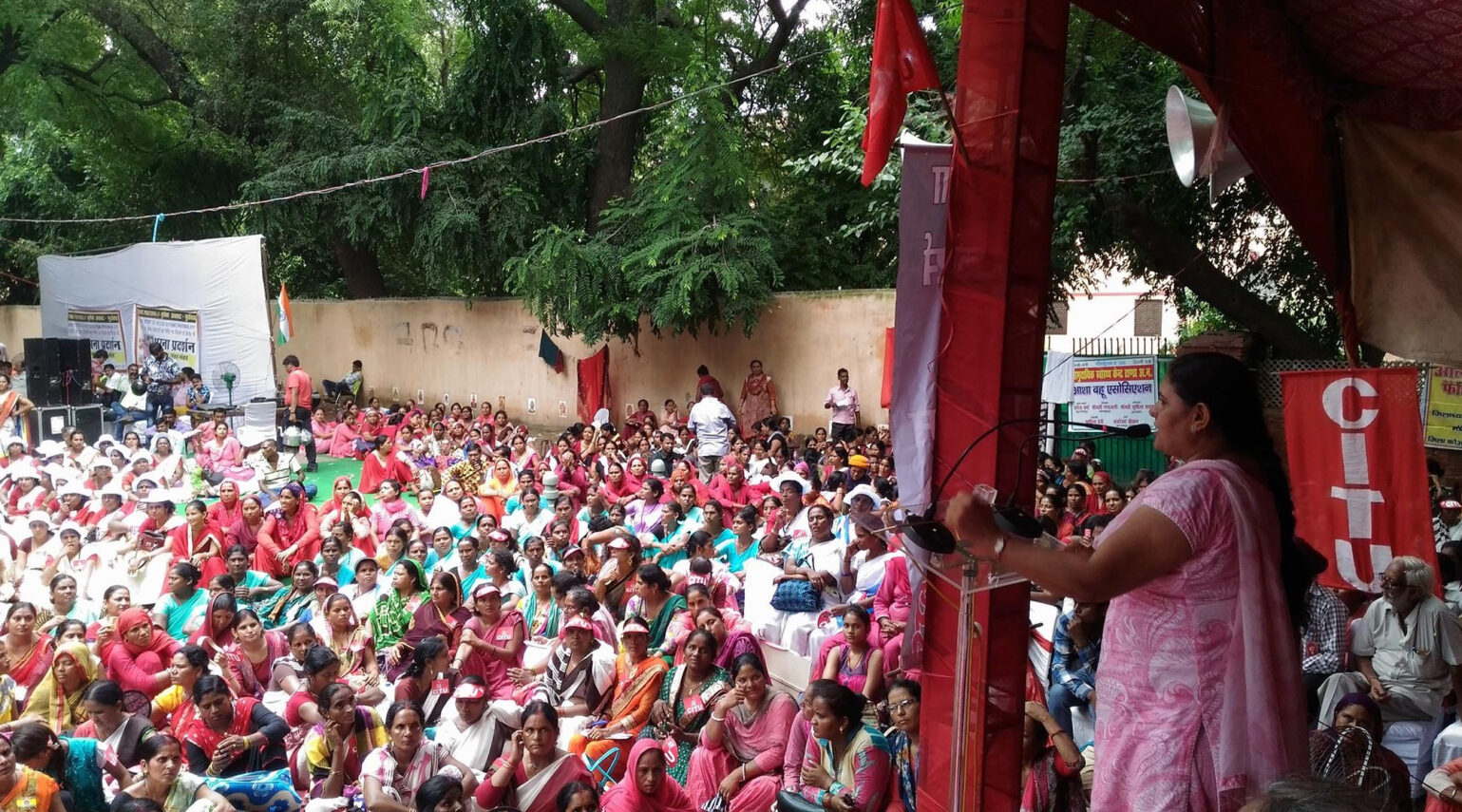[dropcap]I[/dropcap]n an unusual gesture, Prime Minister Narendra Modi chose to personally announce an increase in honorarium for scheme workers like anganwadi workers and accredited social health activists (ASHAs) on September 21, 2018. He even called it a “landmark increase in remuneration”. However, the increase turned out to be quite paltry in absolute terms.
Anganwadi workers who were getting an honorarium of Rs 3,000 would get Rs 4,500 per month and the mini-anganwadi workers, who single-handedly manage small anganwadis in remote areas and who used to get Rs 2,200, would get Rs 3, 500.The anganwadi helper who used to get Rs.1,500 per month would get Rs.2,250 from October. For ASHA workers the recurring performance-based incentives would be doubled.
Why are they paltry amounts? Just compare them with the national floor-level minimum wage of Rs.176 per day notified on July 1, 2017, below which no minimum wage should be fixed; the minimum wage for semi-skilled and skilled workers in agriculture respectively at Rs.325 and Rs.353 fixed by the Centre on April 3, 2018; the minimum wage of Rs.500 per day fixed for security guards, who have been reclassified as skilled workers, on September 13, 2016; the minimum wage for non-farm workers in the central sphere of Rs.307–364 for semi-skilled workers and Rs.334–395 for skilled workers respectively notified on January 19, 2017 and, above all, the minimum wage of Rs.600 per day as the lowest minimum wage fixed in Kerala on May 16, 2018.
However, as per Modi government’s definition, anganwadi and ASHA workers are not ‘workers’ but only ‘volunteers’, who do not receive any ‘wage’ but only an ‘honorarium’! So the principle of minimum wage would not apply to these scheme workers. The enormity of injustice to these workers would be clear once we consider that there more than 26 lakh anganwadi workers and 8.73 lakh ASHAs all over the country.



The judiciary opinion is also divided. In case after case, the higher judiciary has come up with verdicts saying that they don’t qualify as workers who can be regularised. The courts have rejected that they were government employees but that was in the context of serving ASHAs contesting assembly or panchayat polls. Are they covered under the minimum wage law? Or, at least should they have wage parity with regular workers like ANMs as ASHAs also perform many of their activities and even substitute them where their posts are vacant? This question has not yet come up concretely before the higher judiciary. However, in a case the court has ruled that they were entitled for gratuity.
But the State of Punjab and Others versus Jagjit Singh case has offered a glimmer of hope for scheme workers. In that case, in 2016, the Supreme Court ruled that all types of temporary workers and daily wagers are entitled for wage parity with the regular workers provided they perform similar work. Where ASHA workers are absent, ANMs, who are regulars, perform the same work. There are also a few other case laws where the courts have upheld not only the principle of equal pay for equal work but the principle of fair wages as such.
After nine months of antenatal and post-natal care involving at least 6 home visits, the ASHA worker gets an incentive of Rs.200 if she arranges an institutional delivery. They are to promote universal immunisation. They will have to deliver contraceptives at the homes of the beneficiaries. They will have to track TB, leprosy and AIDS in their assigned area and deliver medicines for these diseases also. They will have to address outbreaks of other epidemics like chikungunya and swine flu etc. They will have to engage in counselling relating to breast feeding and maintaining nutrition etc. Though the Centre has fixed incentives for only 8 specific types of activities, they are forced to perform at least 35 different tasks, including some unrelated to healthcare like mobilising women for minister’s function nearby. According to the Tenth Common Review Mission report on National Health Mission, the average monthly incentive amounts for ASHAs range from Rs.2,350 in Jharkhand to Rs.900 in Nagaland. Even after the recent hike by Modi, they might at best earn Rs.100–120 per day. From trying to be a ‘model employer’ in the Nehruvian days, the BJP government has become ‘model exploiter’!


In fact, the 45th session of the Indian Labour Conference (ILC), had recommended that all scheme workers should be recognised as ‘workers’ and not as ‘volunteers’ or ‘honorary workers’, should be paid minimum wages and they should get all statutory benefits like pension, gratuity, DA, earned leave, medical leave, and maternity benefits, including child care leave etc. ILC also recommended that the anganwadi workers and ASHAs be covered under life and health insurance under Aam Aadmi Bima Yojana and Rashtriya Swastya Bima Yojana. It also recommended that for ASHAs suitable working space and amenities be extended as they have no toilets even. It also said they should have right to organise and collective bargaining. But the action taken report presented by the government at the 46th meeting of the Standing Labour Committee rejected each and every one of these demands except the demand for insurance coverage. This despite the same government being a party to the recommendations of the ILC, a tripartite body!
In a hierarchic cultural milieu where occupations are ranked as high and low, who would respect ASHAs earning one-third of what an agricultural labourer earns? No wonder Modi’s announcement of paltry increase in honorarium was met with protests from ASHA workers. On October 2-3 , 2018, the ASHA workers of Madhya Pradesh laid a siege around the house of former CM Chauhan demanding minimum wages and were brutally lathi-charged. ASHAs in Bihar launched a strike on 2 December 2, which has been continuing for the past 20 days, demanding implementation of the ILC recommendations. The scheme workers are preparing for a showdown in some other states also before the 2019 polls. (IPA)


